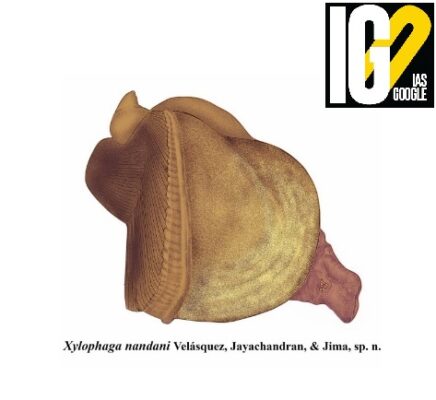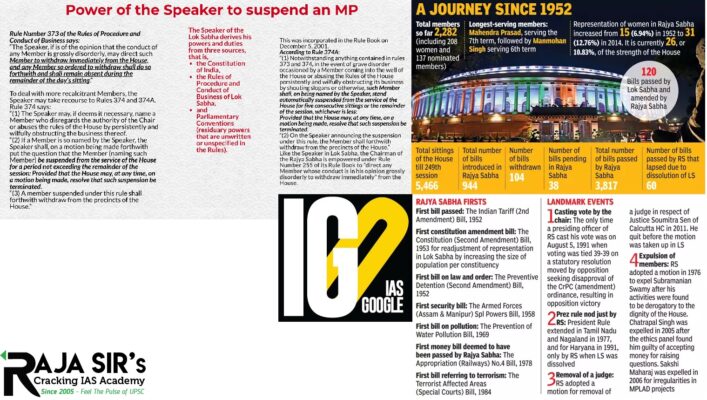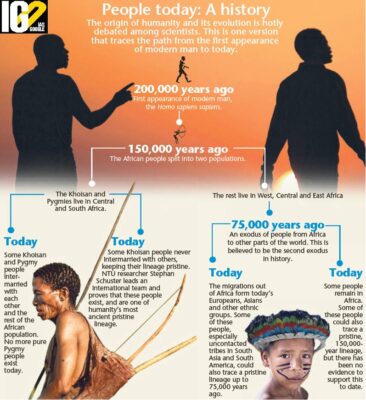- Home
- Prelims
- Mains
- Current Affairs
- Study Materials
- Test Series
 EDITORIALS & ARTICLES
EDITORIALS & ARTICLES
Jan 16, 2022
KATHAK DANCER PANDIT MUNNA SHUKLA DIES AT 78
Recently, Kathak dancer Pandit Munna Shukla dies at 78.
 Kathak
Kathak

 Genesis:
Genesis:
 Space anaemia:
Space anaemia:
 Highlights of the Study:
Highlights of the Study:
 Siachen battlefield:
Siachen battlefield:
 Indian Space Research Organisation (ISRO)
Indian Space Research Organisation (ISRO)

 Genesis:
Genesis:

 Who are the Khoisans?
Who are the Khoisans?
 Kathak
Kathak
- Kathak is the traditional dance form of Uttar Pradesh.
- Kathak derived its name from the ‘Kathika’ or the story-tellers who recited verses from the epics, with gestures and music.
- Kathak is generally accompanied with dhrupad music.
- Taranas, thumris and ghazals were also introduced during the Mughal period.
- Ananda or the introductory item through which the dancer enters the stage.
- Thaat comprising soft and varied movements.
- Todas and Tukdas are small pieces of fast rhythm.
- Jugalbandi is the main attraction of kathak recital which shows a competitive play between the dancer and the table player.
- Padhant is a special feature in which the dancer recites complicated bols and demonstrates them.
- Kramalaya is the concluding piece comprising of intricate and fast footwork.
- Gat bhaav is dance without any music or chanting. This is used to outline different mythological episodes.
- Lucknow: Reached its peak under the reign of Nawab Wajid Ali Khan. It puts more importance on expression and grace.
- Jaipur: Initiated by Bhanuji, it emphasised fluency, speed and long rhythmic patterns.
- Raigarh: It developed under the patronage of Raja Chakradhar Singh. It is unique in its emphasis on percussion music.
- Banaras: It developed under Janakiprasad. It sees a greater use of floorwork and lays special emphasis on symmetry.

- Java (Known as Djawa n Indonesia) is one of Indonesia's Greater Sunda Islands.
- It is surrounded to the southern by the Indian Ocean and to the northern by the Java Sea.
- Java has a population of 147.7 million people, earning it to be the world's most populated island.
- It is located in southeastern Malaysia and Sumatra, south of Borneo (Kalimantan) and western Bali.
 Genesis:
Genesis:
- India is an agricultural nation. Rabi crops (November-March) are start ripening around from January.
- Many regional, religious, and mythological beliefs accompanied by the ripening of Rabi crops, are celebrated like festivals, by different names.
- So, usually, all of these harvest festivals are celebrated in January.
- These festivals also mark the end of the winter with the winter solstice and the start of longer days.
- Geographically, strong westerly winds blow is noticed in December- January. So, Kites are flown during this time.
- It is a Hindu festival, also known as Maghi.
- It is believed that Bhisma Pitamah breathed his last breath on Uttarayan.
- It marks the entry of the sun into the zodiac sign of Makara (Capricorn) as it travels on its celestial path.
- It marks the onset of summer and the six-month-long auspicious period for Hindus.
- Famously, it is celebrated as Uttarayan in Gujrat.
- The indigenous folk dance, called Bihu dance, is performed.
- Pitha, a famous sweet dish, is prepared.
- It is a 4-day festival, celebrated with a family gathering and different rice dishes.
- Kummi dance is performed during this festival.
- It celebrated primarily by Sikhs and Hindus all across the India.
- It marks the end of winter season.
- Observed a night before Makar Sankranti, this occasion involves a Puja Parikrama around the bonfire.
- The Bhangra and Gidda dance on dhol beat are performed.
- Maghi in Punjab
- Maghi Saaji in Himachal Pradesh
- Uttarayan in Jammu, Gujarat, and Uttar Pradesh
- Sakraat in Haryana
- Sukarat in central India
- Ghughuti in Uttarakhand
- Dahi Chura in Bihar
- Makara Sankranti in Odisha, Karnataka, Maharashtra, Goa, and West Bengal
- Sankranthi in Andhra Pradesh and Telangana.
 Space anaemia:
Space anaemia:
- Anaemia is a disease related to red blood cell deficiency.
- It is noticed that people visiting space, faces the problem of anaemia. So, this type of anaemia is designated as Space anaemia.
- The reason behind this problem is the destruction of red blood cells, resulting from fluid shifts.
- Fluid shifts happen because the astronauts' bodies accommodated to weightlessness and again as they re-accommodated to gravity.
 Highlights of the Study:
Highlights of the Study:
- Seismicity in Kachchh region is highly complex as it is characterized by multiple seismic sources in the form of several East-West fault lines, which release continuously accumulating tectonic stresses at intervals producing earthquakes.
- Most of the faults in the region Kachchh Mainland Fault (KMF), South Wagad Fault (SWF), Gedi Fault (GF) and Island Belt Fault (IBF) are seismically active.
- The Katrol Hill Fault (KHF) has produced high magnitude seismic events during the past 30,000 years.
- However, seismic activity like the Katrol Hill Fault (KHF) is not apparent. This makes the task of seismic hazard estimation a scientifically complex process.
- The earthquake events resulted in changes in landscape by the disruption of the channel of the Gunawari River in the fault zone.
- A fault is a fracture in rock where there has been movement and displacement.
- It lies at the major boundaries between Earth's tectonic plates, in the crust, and the earthquakes result from the plates' movements.
- Plates can slowly and continuously move against each other or can build up stress and suddenly jerk.
- Most earthquakes are caused by the sudden movements after the stress build up.
- With dip-slip faults, the rock masses compress on each other vertically and the rock that moves heads downward.
- They are caused by Earth's crust lengthening.
- When they're steep, they're called high-angle faults, and when they're relatively flat, they're low-angle or detachment faults.
- They are common in mountain ranges and rift valleys, which are formed by plate movements rather than erosion or glaciers.
- These faults are created from horizontal compression or contracting of Earth's crust.
- Movement is upward instead of downward.
- These faults are also called lateral faults.
- They are caused by horizontal compression parallel with the fault line, as the plates slip by each other side by side.
- These types of faults are common where land and ocean plates meet.
- When there's more than one type of motion simultaneously and both types of motion are significant and measurable, that is the location of an oblique-slip fault.
- They can even have rotation of the rock formations relative to each other.
- They're caused both by shearing forces and tension along the fault line.
- Kutch is a district of Gujarat in western India.
- It is the largest district of India having a population of around 2 million.
- It is an island, as it is surrounded by the Arabian Seain the west and the Gulf of Kutch in south and southeast.
- The northern and eastern parts are surrounded by the Great and Little Rann (seasonal wetlands) of Kutch.
- A large part of this district is known as Rann of Kutch which is a shallow wetland, submerges in water during the rainy season and becomes dry during other seasons.
- It is known for its marshy salt flats which become snow white after the shallow water dries up each season before the monsoon rains.
- The district is also known for Banni grasslands with their seasonal marshy wetlands which form the outer belt of the Rann of Kutch.
 Siachen battlefield:
Siachen battlefield:
- The Siachen Glacier is located in the eastern Karakoram range in the Himalayas (Ladakh UT).
- It is the world’s highest battlefield i,e., between India and Pakistan.
- It is the longest glacier (78 km) of the Karakoram Range and second longest glacier in the world’s non-polar areas.
- Siachen is the source of the Nubra River that eventually feeds the Indus River.
- Siachen and Sir Creek (Gujrat Border with Pakistan) have long been termed “low hanging fruits” in the past for resolution between India and Pakistan.
- The Line of Control (LoC), made in 1971, had a point called NJ 9842. Here, the LoC between India and Pakistan ends. It was proposed that it will remain unoccupied.
- But Pakistan tried to occupy the territory and in retaliation, India was forced to retaliate. A major portion of it is now under Indian control. Since then, Indo-Pak forces have been face-to-face all along the glacier.
- He played a major role in development of the PSLV and GSLV Mk-III.
 Indian Space Research Organisation (ISRO)
Indian Space Research Organisation (ISRO)
- It is the national space agency of India.
- Formed: 15 August 1969
- Headquartered: Bengaluru
- It operates under the Department of Space (DOS)which is directly overseen by the Prime Minister of India, while Chairman of ISRO acts as executive of DOS as well.
- ISRO is the primary agency in India to perform tasks related to space-based applications, space exploration and development of related technologies.
- It is one of six government space agencies in the world which possess full launch capabilities, deploy cryogenic engines, launch extra-terrestrial missions and operate large fleets of artificial satellites.
- It built India's first satellite, Aryabhata, which was launched by the Soviet Union in 1975.
- ISRO has the world's largest constellation of remote-sensing satellites and operates the two-satellite navigation systems GAGAN (GPS Aided GEO Augmented Navigation) and NavIC (Navigation with Indian Constellation).
- The main objectives of GAGAN are to provide Satellite-based Navigation services with accuracy and integrity required for civil aviation applications and to provide better Air Traffic Management over Indian Airspace.
- NavIC: The main objective is to provide Reliable Position, Navigation and Timing services over India and its neighbourhood.
- NavIC is the operational name of Indian Regional Navigation Satellite System (IRNSS).
- Amazonia-1 was launched by PSLV-C51 launch vehicle.
- Polar Satellite Launch Vehicle (PSLV) is the third generation launch vehicle of India.
- It is the first Indian launch vehicle to be equipped with liquid stages.
- Amazonia-1, the optical earth observation satellite of National Institute for Space Research (INPE) of Brazil, would provide remote sensing data to users for monitoring deforestation in the Amazon region and analysis of diversified agriculture across the Brazilian territory.
- Both launched by PSLV-C51 launch vehicle.
- UNITYsat is a combination of three satellites for providing Radio relay services.
- SDSAT is a nano satellite intended to study the radiation levels/space weather and demonstrate long range communication technologies.
- The GSLV-F10 intended to put the geo imaging satellite GISAT-1 (renamed to earth observation satellite EOS-3) into orbit.
- EOS-3 was supposed to provide real-time imaging of large areas of the earth, monitor natural disasters and provide warnings for the same, and observe cyclones, cloudbursts, thunderclouds, etc.
- However, mission couldn't be accomplished as intended.
- It will attempt a soft landing on the moon, most likely in the third quarter of 2022.
- A lunar lander and a rover will go on the mission.
- It will be launched by ISRO using PSLV.
- It will carry out terrain mapping and analyse the land, ocean and water surfaces for soul moisture.
- It is India’s first human spaceflight mission, is expected in 2023.
- The spacecraft jointly made by ISRO and Hindustan Aeronautics Limited (HAL) will carry three Indian astronauts to the low earth orbit (of 2000 km or less) for a period of five to seven days.
- It will be launched by New Space India Ltd (NSIL).
- It is a four-tonne class communication Ku-band satellite made by ISRO.
- Oceansat-3 (EOS-6), set to be launched by PSLV, and Microsat (EOS-2), set to be launched in the first developmental flight of the Small Satellite Launch Vehicle (SSLV).

- The discovery is also significant in that this is the first time that a member of the genus Xylophaga is being recorded from the Arabian Sea.
- Members of the family Xylophagaidae are deep-sea dwellers. Their presence recorded even at depths of 7,000 metres.
- They are commonly found on wood in deep oceans.
- They are also close relatives to members of the family Teredinidae, a common species of wood-boring clams (shipworms) found in coastal waters.
 Genesis:
Genesis:
- In 2020, 12 MLA form Maharashtra Legislative Assembly were suspended for one year for misbehaving with the presiding officer.
- Denial of the principles of natural justice, and of violation of laid-down procedure.
- Violation of their fundamental right to equality before law under Article 14 of the Constitution
- Misuse of Rule 53of the Maharashtra Legislative Assembly Rules
- As per Rule 53, the power to suspend can only be exercised by the Speaker, and it cannot be put to vote in a resolution as was done in this case.
- Counsel for Maharashtra argued that the House had acted within its legislative competence.
- Under Article 212, courts do not have jurisdiction to inquire into the proceedings of the legislature.
- Article 212 (1): “The validity of any proceedings in the Legislature of a State shall not be called in question on the ground of any alleged irregularity of procedure”.
- Article also states that no officer or member of the Legislature shall be subject to the jurisdiction of any court in respect of the exercise by him of those powers.
- The state has also referred to Article 194 on the powers and privileges of the House:
- It argued that any member who transgresses these privileges can be suspended through the inherent powers of the House.
- It has denied that the power to suspend a member can be exercised only through Rule 53 of the Assembly.
- The House cannot suspend a member beyond 59
- Suspension of the MLAs would amount to punishing the constituencies as a whole.
- There was a statutory obligation to fill in a seat within six months.
- The bench said that the basic structure of the constitution will be threatened if the constituencies of the suspended MLAs remained unrepresented in the Assembly.
- The Bench referred to Article 190 (4) of the Constitution which says that:
- if for a period of 60 days, a member of a House, without its permission, is absent from all meetings, the House may declare his or her seat vacant.
- Rules 373, 374, and 374A of the Rules of Procedure and Conduct of Business in Lok Sabha:
- It provides for the withdrawal of a member whose conduct is “grossly disorderly”, and suspension of one who abuses the rules of the House or wilfully obstructs its business.
- The maximum suspension as per these Rules is for five consecutive sittings or the remainder of the session, whichever is less.
- The maximum suspension for Rajya Sabha under Rules 255 and 256 also does not exceed the remainder of the session.
- Mount Victoria Babax is a distinctive member of the laughingthrush family.
- It is listed as Least Concern under the IUCN Red Data list.
- It has overall brown, streaky plumage, a pale eye and downcurved bill.
- Earlier, it was considered conspecific with the more widespread Chinese Babax.
- In 2005, it was split from the Chinese Babax species on the basis of appearance and song.
- It is found in open forest, forest edges and tangles at elevations of 1200-2800 m.
- The species is widespread in Chin state of Myanmar, and in India it is limited to a very small area in Mizoram (mainly Phawngpui National Park).
- Murlen and Phawngpui National Parks are the only two national parks in Mizoram.

 Who are the Khoisans?
Who are the Khoisans?
- Khoisans are known to be the first people to inhabit South Africa.
- It comprised of two different communities who practiced similar cultures and spoke the same languages.
- The Khoikhoi were nomadic farmers and San were hunter-gatherers.
- The San were the oldest population of humans in South Africa and on Earth.
- Khoisans are known to be the first people to come in contact with Dutch settlers in South Africa (17th century).
- As the Dutch began to take over land in the country, Khoisans were enslaved and hence their population diminished over the years.
- The community was derogated by the European settlers.
- The Khoisans have been protesting near the president’s office since 2018 for recognition of the community and their language among other things.
- Khoisans should be recognised as the country’s first nation.
- The community has been demanding land rights and to be declared rightful owners of the land.
- They want Khoekhoe language, to be declared as another national language of the country.









 Latest News
Latest News General Studies
General Studies